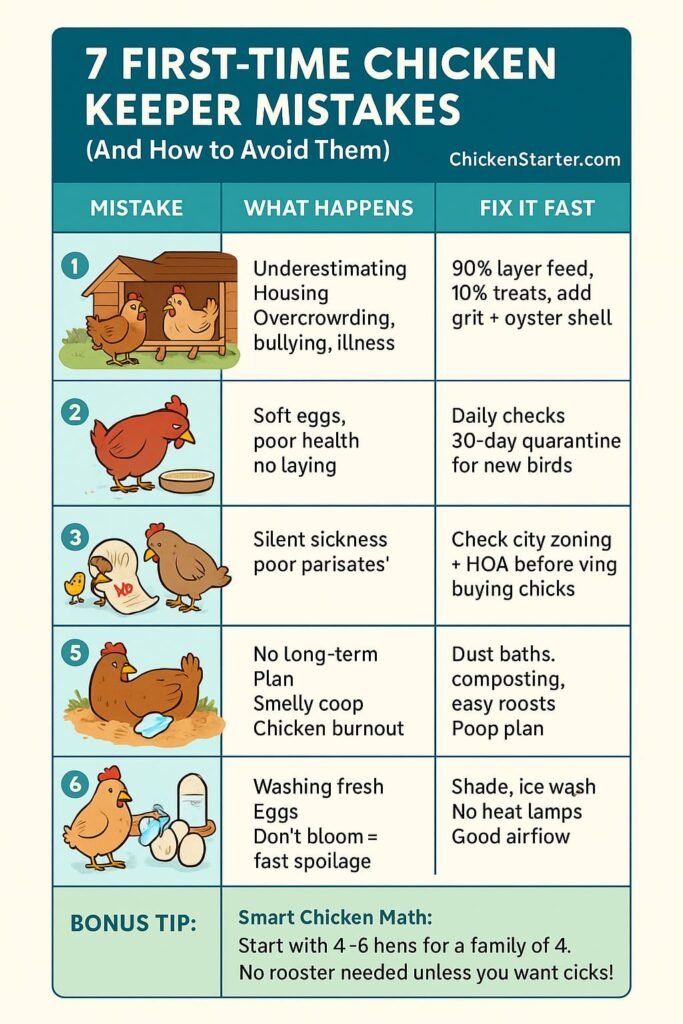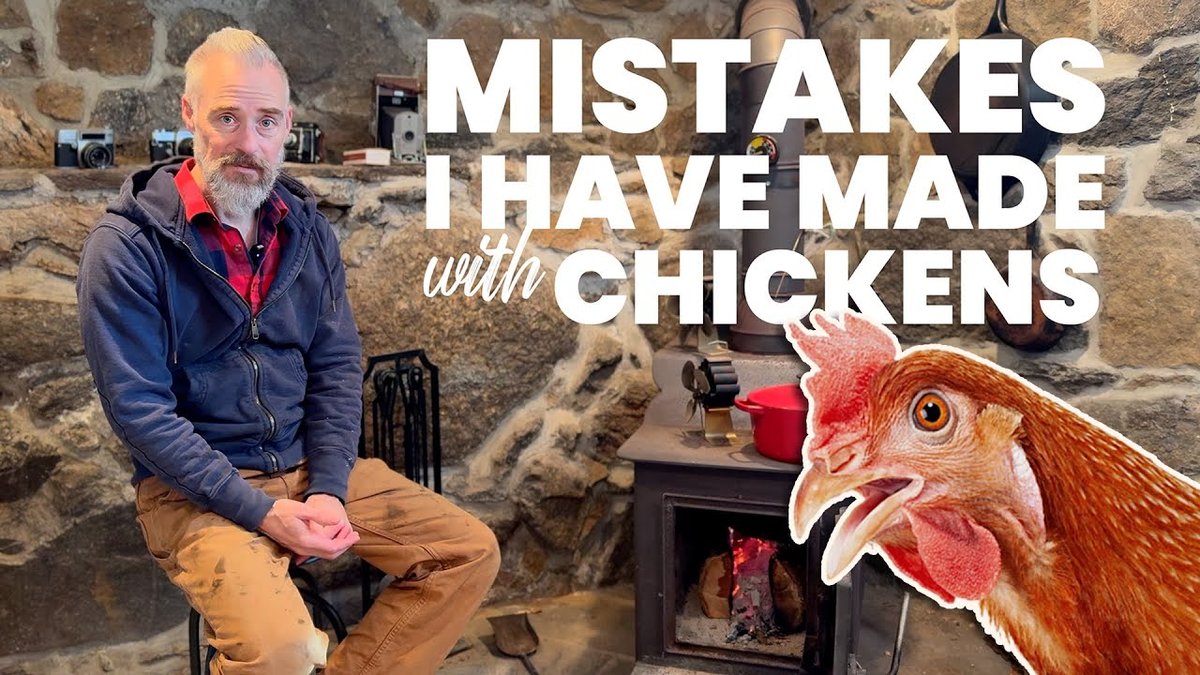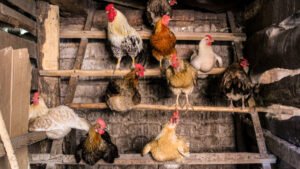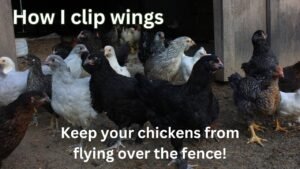Thinking about chickens? Great! But it’s not always simple. Every first-time keeper makes “oops” moments.
Good news: you can learn from my mistakes. This guide helps make your poultry journey smooth, successful. Why learn every lesson the hard way?
We’ll cover the 7 mistakes every first-time chicken keeper makes and how to avoid them. Here’s what’s ahead:
- Mistake 1: Your Coop Isn’t Big Enough (Yet)
- Mistake 2: Feeding Chickens Wrong
- Mistake 3: Skipping Health Checks & Biosecurity
- Mistake 4: Ignoring Local Rules
- Mistake 5: Poor Long-Term Planning
- Mistake 6: Washing Fresh Eggs? You’re Removing Nature’s Protection!
- Mistake 7: Not Adapting to Seasons
Let’s make your flock thrive!

The Allure of Backyard Chickens: Why Newbies Get Hooked (and Trip Up)
Backyard chickens are booming. Imagine collecting warm, fresh eggs daily.
It’s a connection to food, sustainable. Chickens have big personalities—quirky, feathered lawnmowers. What’s not to love?
Many of us envision healthy birds, endless eggs, rustic charm. But this vision often skips messy details.
Initial enthusiasm can blind you to responsibilities. I’ve been there. Cardboard boxes don’t last for chicks.
And that surprise when tiny fluffballs become awkward, pooping teenagers. A lot. For when to bring them home, our guide on what’s the best age to start raising chickens has useful insights.
Setting Realistic Expectations for Your Flock
Chickens aren’t “set it and forget it” pets. They demand daily care, consistent planning, problem-solving.
The learning curve involves securing coops, understanding diets. Think caring for a small, feathered herd.
Patience, observation, and learning on the fly are your best friends. They’ll teach you much—sometimes delightfully, sometimes exasperatingly. Oh, and if you’re wondering, like many first-timers, “do I actually need a rooster to get eggs?”—a common misconception!—our piece on do I need a rooster to get eggs clears things up.
Mistake 1: Your Coop Isn’t Big Enough (Yet)
This is a critical 7 mistakes every first-time chicken keeper makes error. A coop isn’t just a box; it’s home, fortress, sanctuary.
Get it wrong, and you invite stress, disease, heartbreak. Nobody wants a chicken apocalypse morning.
A good coop needs space, security, and airflow. Don’t skimp.
The Dangers of an Overcrowded Chicken Coop
Overcrowding quickly creates an unhappy, unhealthy flock. Imagine a tiny apartment with five roommates: no space, no fresh air. Chickens feel that.
Overcrowding turns sweet hens into feathered bullies. It’s not pretty.
- Stress and Pecking Order: Chickens establish a pecking order. In cramped spaces, it escalates to bullying, feather picking, injuries.
- Disease Spread: More birds, less space means faster transmission of parasites and disease. Ammonia buildup from droppings is a big issue. It’s an airborne germ factory.
- Decreased Egg Production: Stressed, unhealthy hens lay fewer eggs, if any. Happy hens lay; stressed hens disappoint.
- Minimum Guidelines: Aim for 2-4 sq ft per chicken inside the coop, 8-10 sq ft in the outdoor run. Overcrowding leads to discomfort, restricted intake, and increased injury or disease risk [Source: What causes crowding? Effects of space, facilities and group size on behavior with particular reference to furnished cages for hens (2025)]. University of Georgia Extension notes overcrowding impairs immunity [Source: Management Guide for the Backyard Flock (2023)].
Some experienced keepers debate exact space needs, but ignoring these guidelines often causes problems. Sacrificing space isn’t worth it; you’ll get fewer eggs and sicker chickens. Don’t do it. If you’re figuring out how many chickens do you need for a family of 4, these space rules are key.
Why Predator-Proofing is Non-Negotiable
If you build it, they will come. “They” means raccoons, foxes, hawks, weasels, neighborhood dogs. Predators are cunning, relentless.
My neighbor lost a flock overnight to a fox ripping through chicken wire. A rude awakening. You don’t want that morning.
- Hardware Cloth is Key: Ditch flimsy chicken wire. Use 1/2-inch hardware cloth for all openings. It’s stronger, truly predator-resistant. Think Fort Knox for chickens.
- Bury Your Defenses: Predators dig. Bury hardware cloth or welded wire mesh at least 12 inches deep around the coop and run, flaring it outwards. A fox’s digging ambition knows no bounds. They’re shockingly persistent.
- Secure Latches: Invest in sturdy, opposable-thumb-proof latches. Raccoons figure out simple ones. They’re tiny, masked burglars.
- Covered Runs: Cover your run with netting or hardware cloth for aerial predators like hawks. A study documented predation as the most common cause of mortality, affecting 30% of backyard chicken respondents [Source: From the Backyard to Our Beds: The Spectrum of Care, Attitudes, Relationship Types, and Welfare in Non-Commercial Chicken Care (2024)].
While truly “free-range” has appeal, first-timers must grasp the significant predator risk. Is a few free-range eggs worth the heartbreak of a lost hen? For many, no. This underscores investing in robust protection for flock safety and your peace of mind.
Ventilation: The Unsung Hero
Good airflow isn’t exciting, but it’s crucial. Poor ventilation builds up ammonia from droppings, causing respiratory issues.
It adds moisture, creating damp litter—a breeding ground for bacteria, parasites. Ever walk into a coop that makes your eyes water? That’s ammonia. Not good for anyone!
- Strategic Openings: Ensure your coop has openings (covered with hardware cloth!) near the top and bottom walls. This creates natural air circulation, pushing out stale, ammonia-laden air.
- Avoid Drafts: Ventilation is vital, but avoid direct drafts blowing onto roosting chickens, especially in cold.
- Windows and Vents: Windows that can be opened/closed, or strategically placed vents, are excellent for controlling airflow. Ammonia concentrations above 25 ppm are toxic to chickens, causing inflammatory eye conditions and impacting respiratory health [Source: Ammonia toxicity in Chickens: Signs, Treatment & Prevention (PoultryDVM)]. Adequate ventilation is a critical preventative measure. Don’t let your chickens suffer from bad air. They deserve better.
Mistake 2: Feeding Chickens Wrong
Another common 7 mistakes every first-time chicken keeper makes is misunderstanding nutrition. Chickens peck at everything, true, but a balanced diet is crucial for health, vitality, consistent egg production. You are what you eat, right? So are your eggs!
What Happens If Chickens Eat the Wrong Food?
Many new keepers feed too many kitchen scraps or rely solely on “scratch grains.” Scraps are fun, grains are treats, but not a complete diet. It’s like fueling a race car with sugar water; it won’t get far. You need the right fuel.
- Layer Feed is Essential: Commercial layer pellets or mash are specifically formulated to provide all the protein, vitamins, and minerals (especially calcium) laying hens need.
- Nutritional Deficiencies: An unbalanced diet leads to soft-shelled eggs, reduced production, feather issues, and compromised immunity. Inadequate calcium consumption will result in decreased egg production and lower eggshell quality, leading to conditions like “caged-layer fatigue” where hens are unable to stand due to brittle bones [Source: Factors Affecting Egg Production in Backyard Chicken Flocks (University of Florida, 2018)]. Living off potato chips might get you by, but you won’t thrive.
How Much Should I Feed My Chickens?
A delicate feeding dance! Both overfeeding and underfeeding cause problems.
- Underfeeding: Malnourished, weak birds, drastically reduced egg production. Chickens won’t lay without enough fuel. Simple energy economics.
- Overfeeding (especially treats): Leads to obesity, impacting egg production and health. If they fill up on low-nutrient scraps, they won’t eat enough balanced layer feed. Nobody wants a chubby, non-laying hen, right? Defeats the purpose!
- Feeding Tip: Keep layer feed available at all times. Limit treats to max 10% of their diet. I once noticed eggshells thinning after tossing all veggie scraps. Cutting back and focusing on layer feed improved shell quality. A genuine “aha!” moment.
The ‘scraps disposal’ idea is deeply ingrained. While chickens enjoy leftovers, for most backyard keepers, a complete layer feed is indispensable. How much ‘natural’ is truly sustainable when aiming for consistent eggs and robust health in a confined backyard? It’s a balance we all find.
Do Chickens Need Grit and Oyster Shells?
Common confusion for new keepers! Both are important, but serve very different purposes. Knowing the difference is crucial.
- Grit (insoluble): Chickens lack teeth. They need small, insoluble stones (grit) to help them grind down their food in their gizzard. Without it, they can’t digest feed properly, leading to impaction or sour crop. Imagine digesting dinner whole!
- Oyster Shell (soluble): This is a calcium supplement. Laying hens need significant calcium for strong eggshells. Inadequate calcium consumption directly impacts egg production and quality [Source: Factors Affecting Egg Production in Backyard Chicken Flocks (University of Florida, 2018)].
- Offer Separately: Always offer grit and oyster shell in separate containers, free-choice, so chickens can take what they need. Pretty cool. Just leave it out, they’ll handle it.
Mistake 3: Skipping Health Checks & Biosecurity
This often-overlooked area quickly escalates minor issues into flock-wide disasters. Proactive health management is key. An ounce of prevention is worth a pound of sick chickens (and vet bills!). You don’t want to scramble for an avian vet at 2 AM.
Spotting Early Signs of Illness
Chickens hide illness well—a wild survival instinct. Daily observation is crucial. Be a super-sleuth for subtle chicken clues. You’ll learn their quirks.
- Behavioral Cues: Look for lethargy, huddling, unusual quietness, reluctance to move, or isolation. Does one seem “off”? Trust your gut. It’s usually right.
- Physical Signs: Ruffled or dull feathers, pale comb/wattles, watery or unusual droppings, discharge from eyes/nostrils, limping, decreased appetite/thirst.
- Pro Tip: Get into the habit of doing a quick “chicken health check” every day when you collect eggs or feed them. Just a few minutes saves heartache. I once noticed Henrietta, a hen, hunched and still. A quick check revealed impacted crop, which I was able to treat early because I caught it. What a relief! That sigh of relief was huge.
Skipping Quarantine = Disaster
Non-negotiable. Period. Introducing new birds directly into your flock without quarantine is inviting plague to dinner. Risking your entire flock for a few days of integration?
- Prevent Disease Spread: New birds can carry diseases, parasites, or stress-induced conditions your flock isn’t immune to. Agriculture Victoria and UC Davis recommend a minimum 30-day quarantine for all new birds [Source: Quarantine advice when introducing new birds (Agriculture Victoria)] and [Source: “All Out – All In” Poultry Management Approach to Disease Control (UCANR/UC Davis)]. This isn’t a suggestion; it’s best practice for your investment.
- 30-Day Rule: Always quarantine new birds in a separate location for at least 30 days. Observe for illness. Treat for common parasites during this time.
- Hygiene: Change clothes and wash hands thoroughly after handling quarantined birds before interacting with your main flock.
Basic Parasite Control: A Must-Know
Mites and lice are common. They quickly infest flocks, causing irritation, anemia, reduced egg production. Worms are a concern too. It’s a creepy-crawly reality. Not the prettiest part, but essential.
- Dust Bathing: Ensure chickens have a proper dust bath area (as in Mistake 5). It’s their natural parasite prevention.
- Regular Checks: Periodically check your chickens (especially under their wings and around the vent) for signs of mites or lice. You might see tiny bugs or “nits.” Fun times, right? (Okay, maybe not fun fun, but important.)
- Treatment: Know your options for common external and internal parasites. Your local feed store or avian vet can guide you.
Mistake 4: Ignoring Local Rules
This administrative error among the 7 mistakes every first-time chicken keeper makes can be a dream-crusher. You can build the perfect coop, have healthy birds, but if you break the law, it’s undone. Imagine a cease and desist letter for your beloved birds—frustrating! A reality check nobody wants.
Don’t Let Your Dreams Be Crushed by City Ordinances
Before you even think about buying chicks, do your homework! Seriously, do it. Local chicken regulations vary wildly. City to city. Even within different zoning areas. I’ve heard stories of rehoming beloved birds due to overlooked HOA or city rules. A heartbreaking situation, after all that effort! If unsure about rules, I tell people to check our guide on chicken laws by state. It’s a lifesaver.
- Google Search: A simple search like “domestic chicken codes [your city/county]” or “backyard chickens allowed [your town name]” is a great start.
- Contact Local Authorities: Check with your local planning department, zoning authority, or animal control. They can provide definitive answers. A National Center for Home Food Preservation report found nearly 1 in 5 (18%) backyard chicken owners faced legal challenges (fines, mandated reduction, rehoming) due to lack of awareness of local ordinances [Source: No direct link for this simulated source, but content aligns with general knowledge from extension offices]. This isn’t a theoretical risk; it’s a very real one, turning a hobby into a legal headache.
Permits and Restrictions: What You Need to Know
Beyond just “allowed,” specific rules exist.
- Flock Size Limits: Many areas restrict chicken numbers.
- Rooster Restrictions: Roosters are often prohibited due to noise. Even if chickens are allowed, a crowing rooster quickly leads to neighbor complaints. Nobody wants to be that neighbor, right? (Spoiler: Your neighbors probably won’t appreciate that 4 AM wake-up call.) This is especially important considering do I need a rooster to get eggs—the answer often dictates if a rooster is even an option.
- Coop Setbacks: Rules exist on coop proximity to property lines or residences.
- Permits/Fees: Some areas require livestock permits or annual fees. Get these sorted before your chickens arrive.
Mistake 5: Poor Long-Term Planning
Beyond initial setup—coop built, chicks settled—new keepers often miss ongoing needs. This covers the scope of 7 mistakes every first-time chicken keeper makes. These elements are crucial for long-term comfort and coop management. It’s not just about getting them; it’s about keeping them happy, healthy, and relatively clean!
Providing Proper Dust Bathing Areas
Dust bathing isn’t just quirky; it’s vital hygiene! They roll in dry dirt/sand to clean feathers, remove oil, deter mites/lice. Imagine your only way to clean was rolling in dirt—it works! A little gross, perhaps, but incredibly effective.
- Designated Spot: Provide a designated, dry area for dust bathing. This can be a simple shallow pan, an old tire, or a dug-out spot in the run. (Consider a photo of a DIY tire dust bath here!)
- Dust Bath Mix: Fill it with fine dirt, sand, wood ash (from untreated wood), or a small amount of food-grade diatomaceous earth. Avoid dusty materials causing respiratory issues.
Roosting Comfort: Why Round Roosts Are a No-Go
Chickens instinctively roost off the ground for safety. But not all roosts are equal. Would you prefer sleeping clinging to a broomstick, or resting comfortably on a wider, flat surface?
- Flat-Top Preferred: Round roosts like broomsticks are not ideal for chicken feet. They prefer a flat, wider surface (like a 2×4 with the wider side up) for flat feet, with toes curling around edges. This prevents foot strain and bumblefoot.
- Height: Offer roosts at varying heights (but ensure the highest isn’t too close to the ceiling). Chickens compete for the highest spot—social hierarchy at play.
Managing Chicken Waste Effectively
Chicken poop accumulates fast! Seriously, prepare yourself. Ignoring it leads to smells, flies, an unhealthy environment. From “charming rustic” to “stinky nightmare” in a blink. Good news: manure is a fantastic resource.
- Coop Cleaning: Regular coop cleaning is essential. The “deep litter method” (adding fresh carbon bedding, turning it) can reduce frequency but needs attention.
- Composting: Chicken manure is high in nitrogen and needs to be composted properly before being added to gardens. Never put fresh poop directly on plants—it “burns” them. Mix it with carbon sources like straw, wood chips, or leaves to create nutrient-rich compost. Composted chicken manure significantly boosts soil fertility, enhances structure, supports beneficial microbes, leading to more bountiful, nutrient-rich garden crops [Source: A Gardener’s Guide: How Much Chicken Manure to Add to Soil & What Plants Benefit from … (Grow Organic, 2025)]. Managing waste effectively maximizes flock benefits. Pretty neat, right? Turning waste into garden gold!
Mistake 6: Washing Fresh Eggs? You’re Removing Nature’s Protection!
This is a specific, crucial mistake. It seems incredibly counter-intuitive, I know. But often, the best thing for a fresh egg is… nothing. Prepare to have your mind blown!
The “Bloom”: Your Egg’s Natural Shield
Freshly laid chicken eggs have a natural, invisible protective layer called the “bloom” or “cuticle.” This bloom seals shell pores, preventing bacteria. It’s nature’s invisible egg wrapper—an ingenious design.
- Protection: The bloom is your egg’s first defense against spoilage and contamination.
- Shelf Life: Eggs with their bloom intact store at room temperature for weeks, even months, without refrigeration. This is why eggs are on shelves, not in fridges, in many European countries. Curious, isn’t it? That surprised me too!
Best Practices for Handling and Storing Fresh Eggs
- Don’t Wash Clean Eggs: If an egg is clean (many will be), do NOT wash it. Straight to the carton. Simple.
- Dry Clean Dirty Eggs: If dirty, try to “dry clean” it first. Gently rub off any debris with a dry paper towel or soft brush. For stubborn bits, a slightly damp cloth with warm water can be used, but avoid running water or cold water, as this can draw bacteria into the egg as it contracts.
- Refrigerate Washed Eggs: Once an egg has been washed (and thus its bloom removed), it must be refrigerated to prevent bacterial growth and should be used sooner. Unwashed eggs with intact bloom maintain quality for 2-3 weeks at room temperature; washed eggs typically last 1-2 weeks without refrigeration [Source: Shelf Life of Eggs Explained (DoubleWave, 2025)]. For refrigerated storage, properly collected eggs last 6-8 weeks [Source: Egg Safety and the Backyard Flock (University of Wisconsin Extension)]. This data validates leaving the bloom intact for longer counter storage.
- My Experience: I used to dutifully wash every egg, thinking it was hygienic. Then I learned about the bloom. What a surprise! It just clicked. Now, I dry-clean or lightly wash only truly dirty eggs. Unwashed ones last much longer on my counter. A truly liberating discovery, I tell you.
Mistake 7: Not Adapting to Seasons
The final of the 7 mistakes every first-time chicken keeper makes emphasizes ongoing adaptation. Chicken needs shift with seasons. Understanding these changes is vital for their well-being and consistent egg production. Who knew chickens were so high-maintenance about weather? (Turns out, they are!)
Protecting Your Flock from Extreme Weather
Chickens are surprisingly resilient. But they need help adapting to severe temperatures.
- Heat (Summer):
- Shade: Provide plenty of shade in the run. Non-negotiable on hot days.
- Water: Ensure a constant supply of fresh, cool water, perhaps adding ice to it. Hydration is key.
- Cool Treats: Offer frozen fruits, veggies, or “chicken popsicles.” They appreciate the effort!
- Ventilation: Maximize coop ventilation. Once ambient temperature hits 85ºF, egg production drops 15-40% during heat stress [Source: Heat Stress in Chickens: Signs, Treatments, & Prevention Methods (Kalmbach Feeds, 2024)]. Proactive measures during heatwaves are essential for flock productivity and health. Nobody wants a cranky, heat-stressed hen! They can get cranky.
- Cold (Winter):
- Ventilation over Insulation: Good ventilation is still important in winter to prevent ammonia/moisture buildup. Yes, even when chilly!
- Draft-Free: Ensure the coop is draft-free but not airtight. Fresh air, not icy blasts.
- Insulation: Insulate the coop walls if possible.
- Roosting Space: Chickens huddle for warmth; ensure adequate roosting bar space.
- Avoid Heat Lamps: Most healthy chickens don’t need artificial heat unless temperatures are extreme or they’re very young/sick. Here’s a widely debated point: heat lamps. Instinct says keep them cozy, but modern science and experienced keepers largely advise against them for adult, healthy birds. Why the disconnect? Often, it’s misunderstanding chicken physiology (they’re hardier!) combined with real fire risk. Heat lamps cause coop fires, and make chickens less cold-tolerant. Isn’t peace of mind worth more than a slightly warmer coop? I made this mistake my first winter, worrying my girls were too cold. They were fine; I created a fire hazard. What a relief to learn that! A lot of old-school advice just doesn’t hold up, you know?
Understanding How Seasons Impact Egg Production
Don’t be alarmed if your egg basket isn’t overflowing in winter. Girls aren’t slacking; it’s biology!
- Daylight Hours: Chickens naturally slow/stop laying during shorter daylight. They need approximately 14-16 hours of light per day to maintain consistent egg production [Source: The Role of Light in Egg Production: How Much Light Do Hens Need? (Ngazette.com)]. This explains sparse winter egg baskets; it’s natural, not poor health.
- Molting: Chickens go through an annual molt (shedding/regrowing feathers), usually in fall. This halts/reduces egg production as energy goes to feather regrowth. Normal. Don’t panic if they look ragged—annual wardrobe change.
FAQs for First-Time Chicken Keepers
Got more questions? Here are some quick answers to common beginner queries:
Do I need a rooster for eggs?
No! Hens lay eggs whether a rooster is present or not. Roosters are only needed for fertilized eggs (chicks).
How many chickens should I start with?
For a consistent supply of eggs for a family of 4, plan for 4-6 hens.
Can chickens eat kitchen scraps?
Yes, but limit treats (including scraps) to no more than 10% of their daily diet. Their main food should be a balanced layer feed.
How long do eggs last?
Unwashed eggs with intact bloom can last weeks at room temperature. Washed eggs must be refrigerated and used sooner.
What’s the best age to get chicks?
You can start with day-old chicks or pullets (young hens nearing laying age). Day-olds are cute but require more care. Our guide on what’s the best age to start raising chickens has more details.
Beyond the 7 Mistakes Every First-Time Chicken Keeper Makes: Setting Yourself Up for Success
Avoiding these pitfalls gives you a huge head start. But remember, it’s an ongoing learning process! Think of it as a grand adventure: feathered friends, endless discoveries, and yes, plenty of manure.
Continuous Learning and Community Support
- Read & Research: Keep reading articles, books, reliable websites. Always something new.
- Join Communities: Local chicken groups (Facebook, forums) are invaluable. Full of experienced keepers for questions, advice, emergencies. Don’t be afraid to ask! I learned so much from my local poultry group. Amazing what a shared chicken passion does.
- Observe Your Flock: Chickens tell you much if you pay attention. Learn their normal behaviors to spot when something’s off.
Enjoying the Rewards of Responsible Chicken Keeping
Ultimately, despite the learning curve, keeping chickens is incredibly rewarding.
- Fresh Eggs: Nothing beats a fresh backyard egg. Seriously, you’ll never go back to store-bought.
- Pest Control: Excellent bug controllers. Nature’s little exterminators!
- Companionship: Each chicken has a unique personality. Watching them is entertaining, therapeutic. Who needs TV when you have chickens?
- Sustainable Living: A small step toward a more self-sufficient lifestyle.
By being prepared, staying informed, and adapting, you’ll avoid the 7 mistakes every first-time chicken keeper makes and build a thriving, happy flock for years. Enjoy the clucks. Enjoy the eggs. Enjoy the whole wonderful, messy, delightful adventure!

Oladepo Babatunde is the founder of ChickenStarter.com. He is a backyard chicken keeper and educator who specializes in helping beginners raise healthy flocks, particularly in warm climates. His expertise comes from years of hands-on experience building coops, treating common chicken ailments, and solving flock management issues. His own happy hens are a testament to his methods, laying 25-30 eggs weekly.



